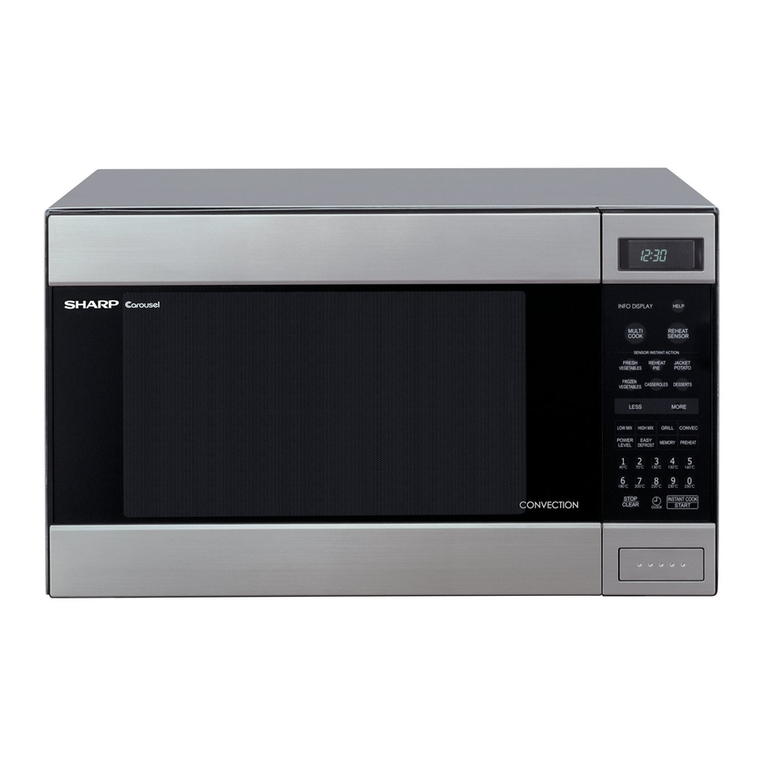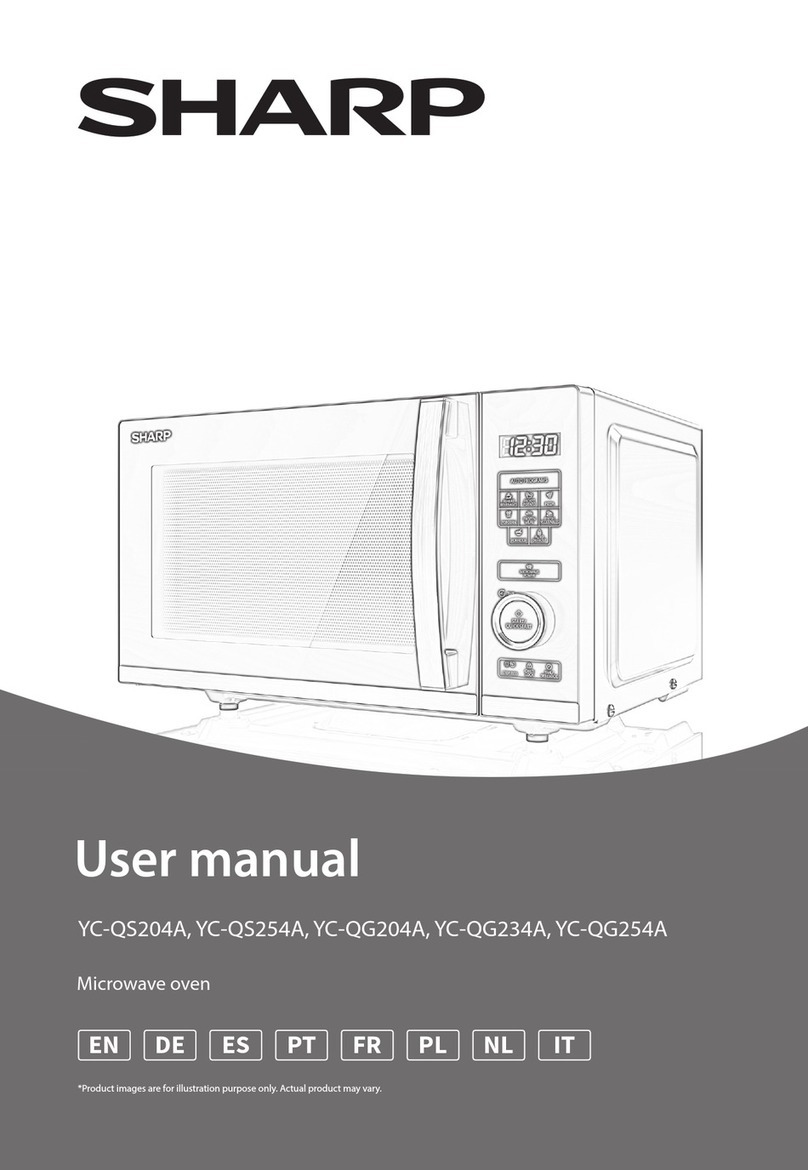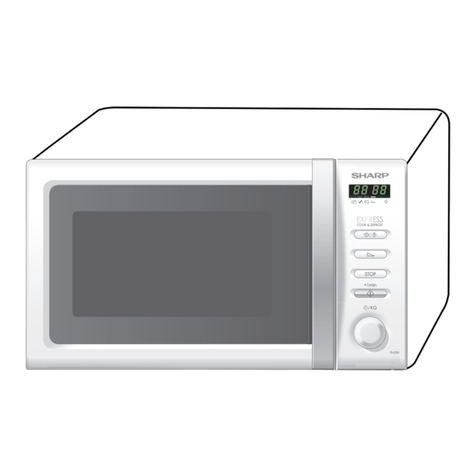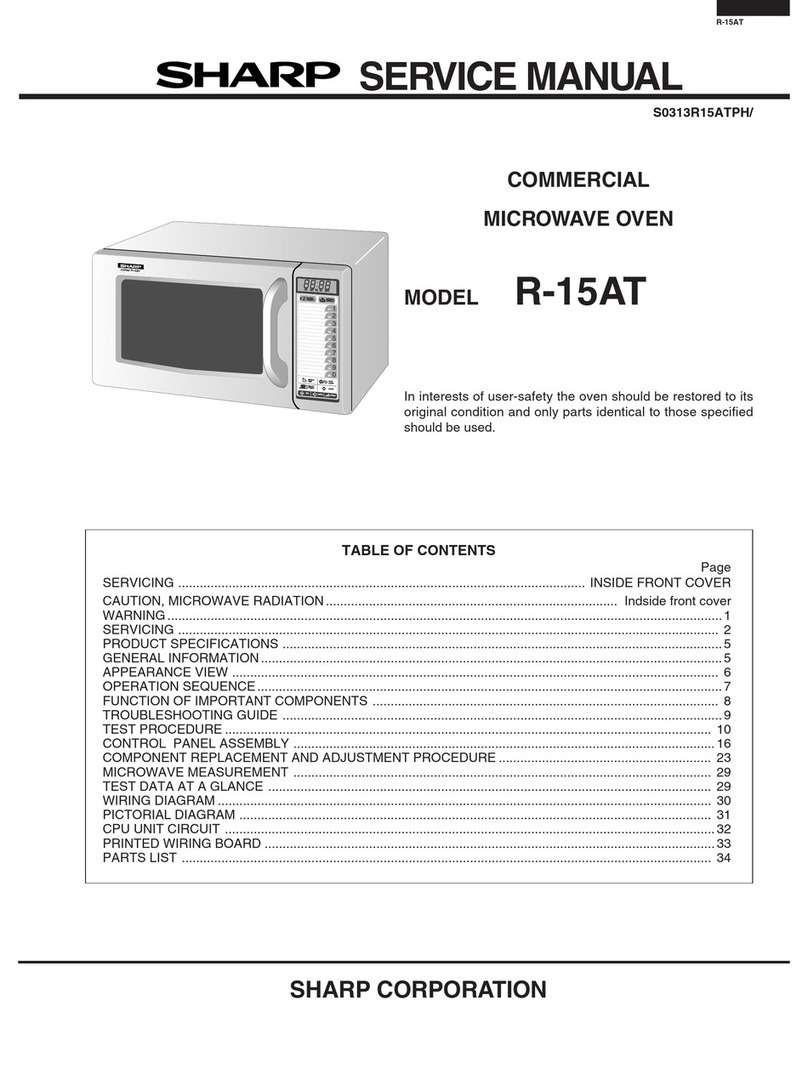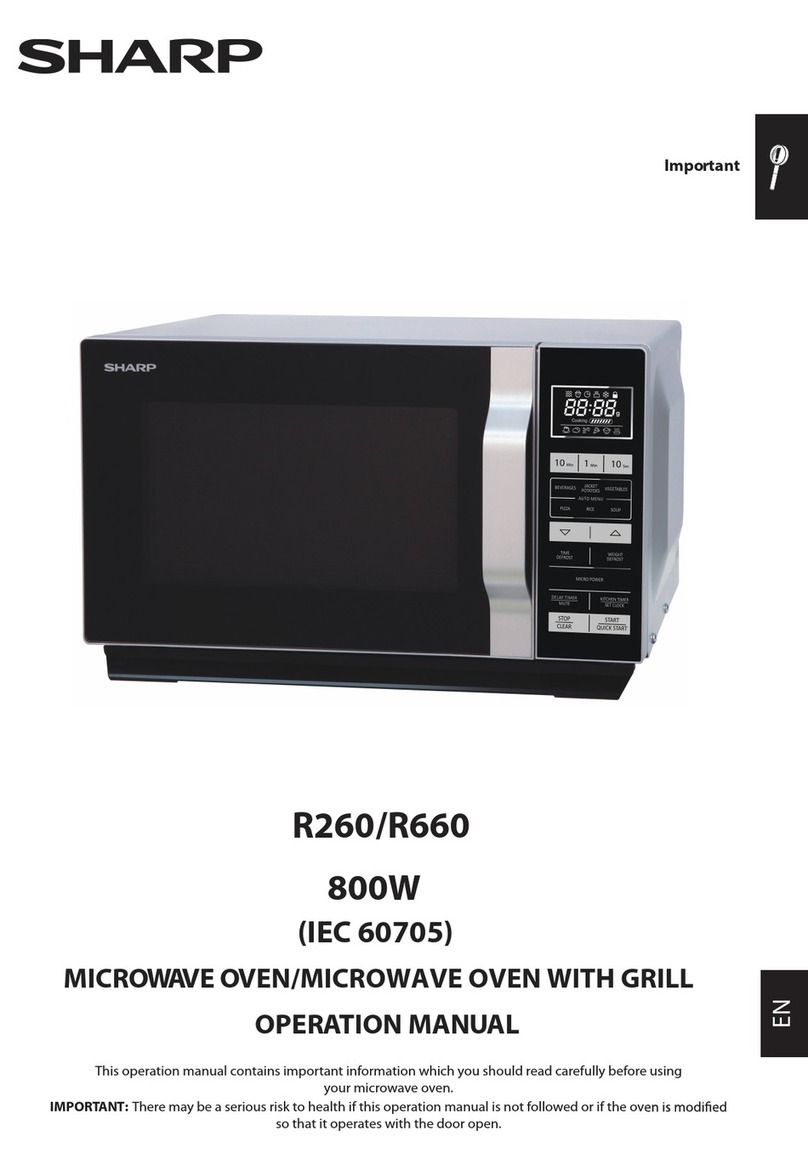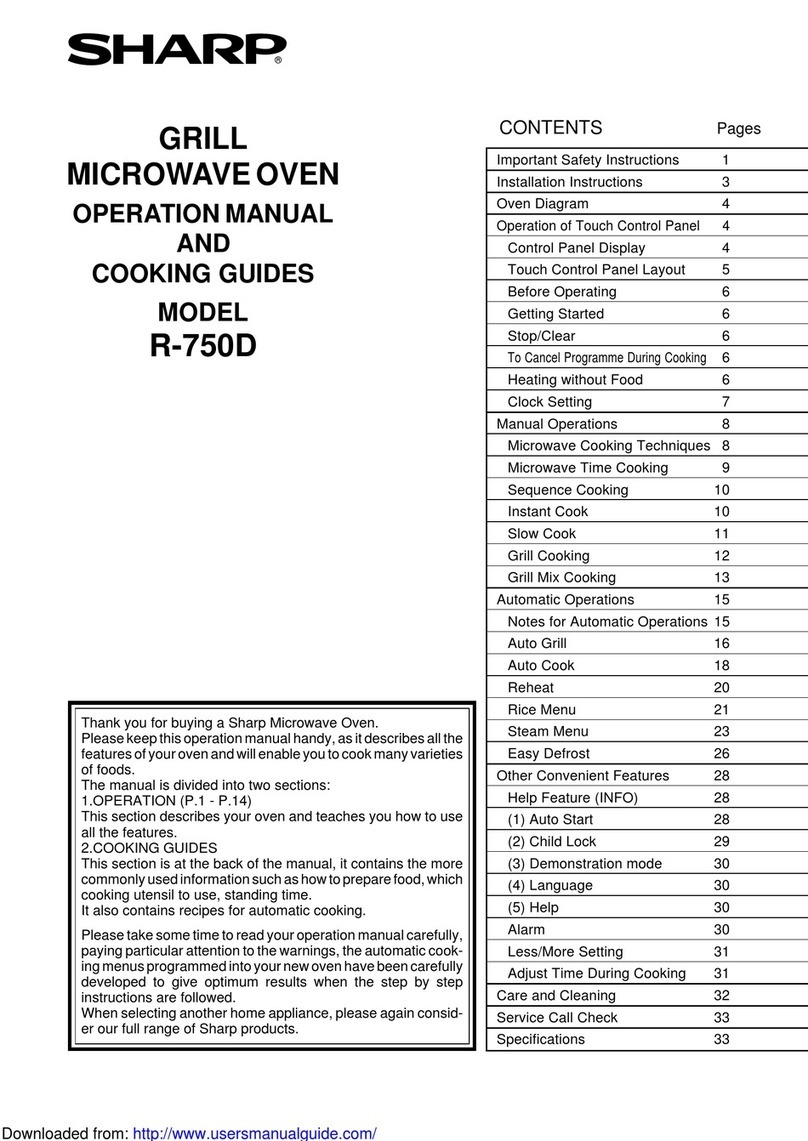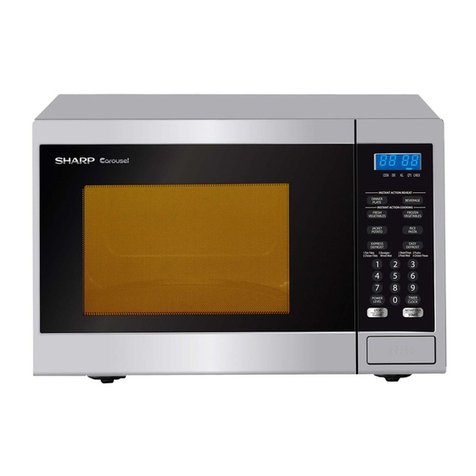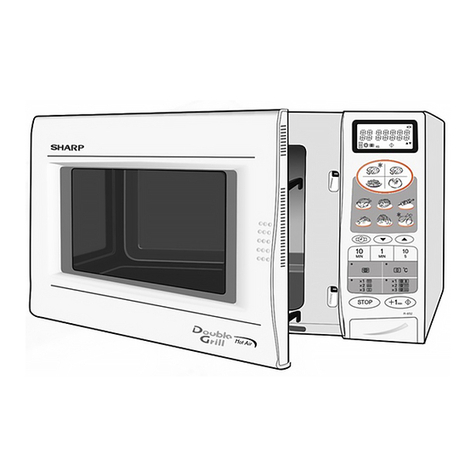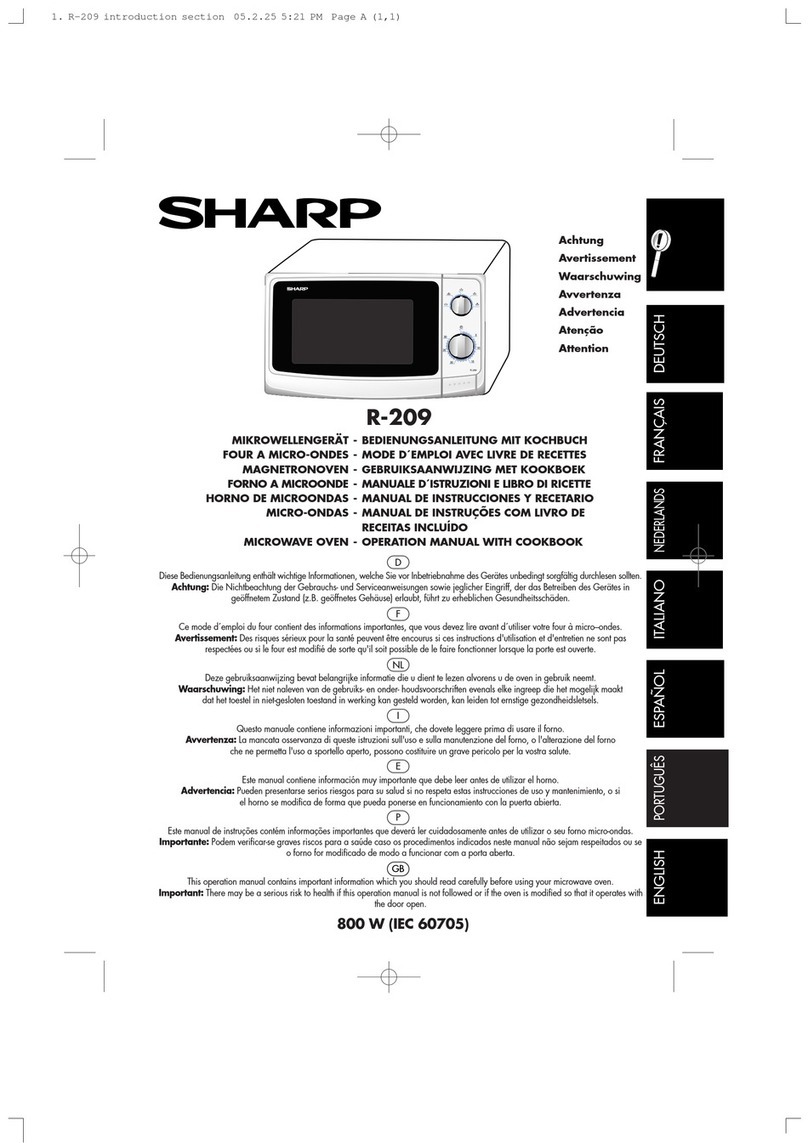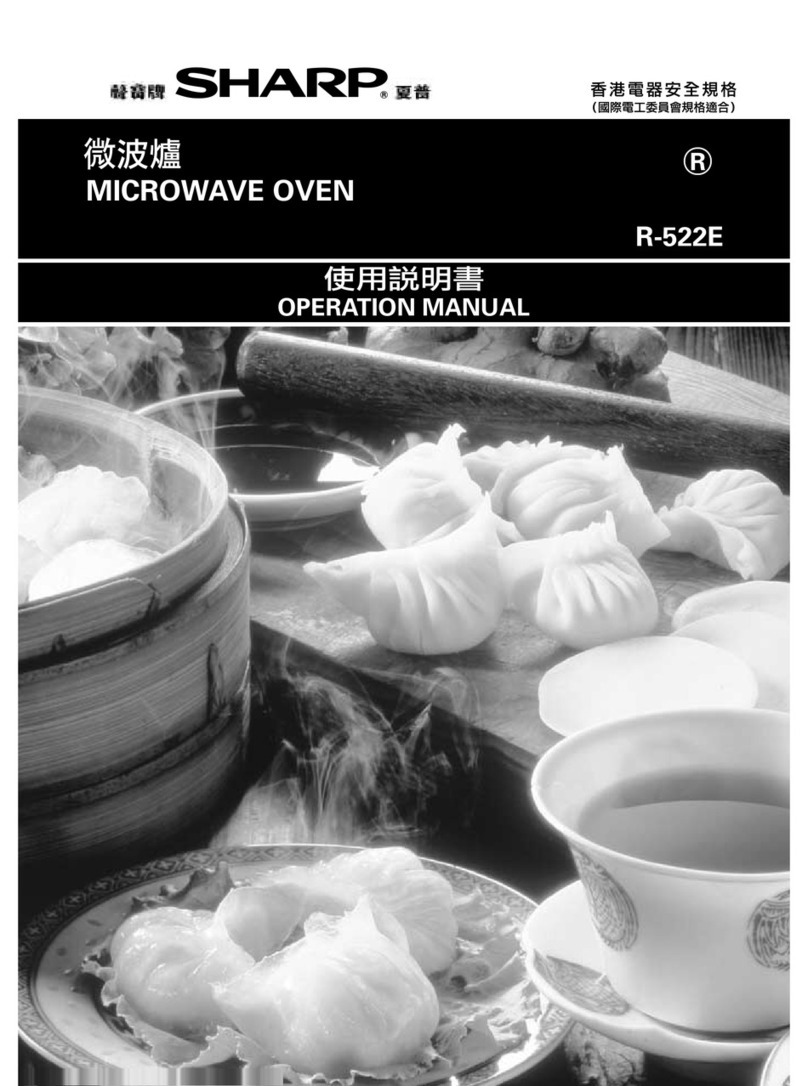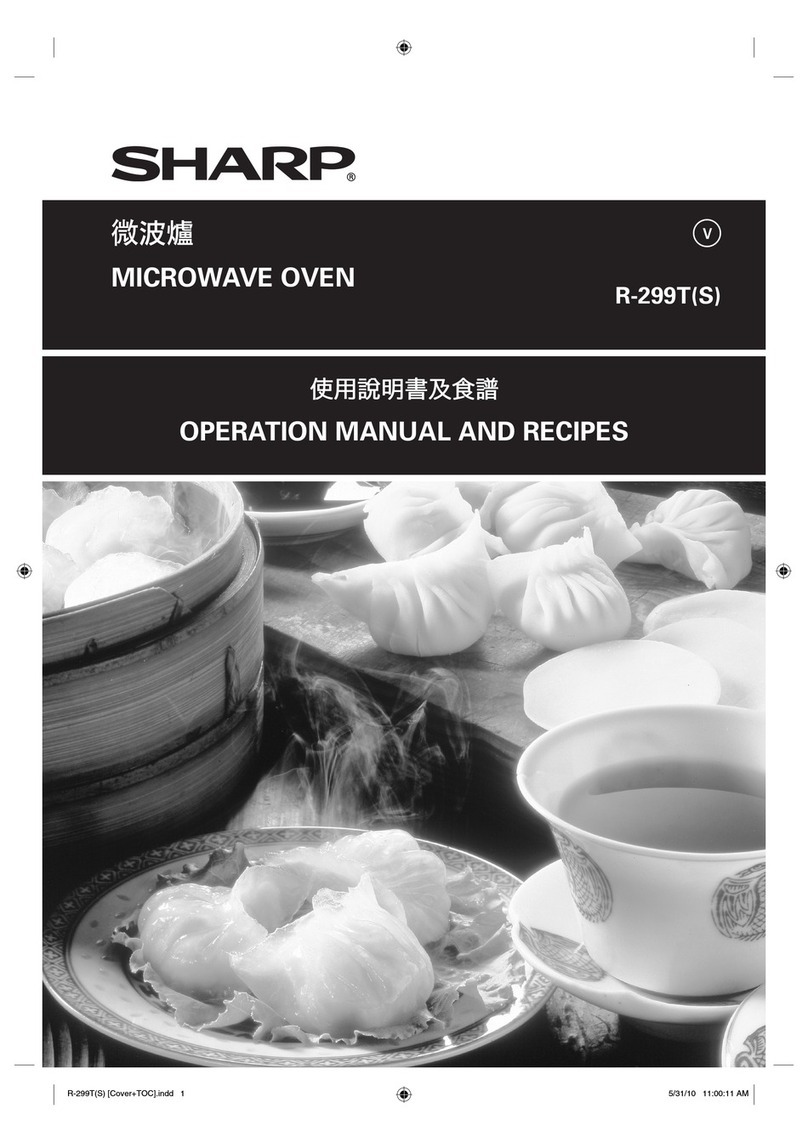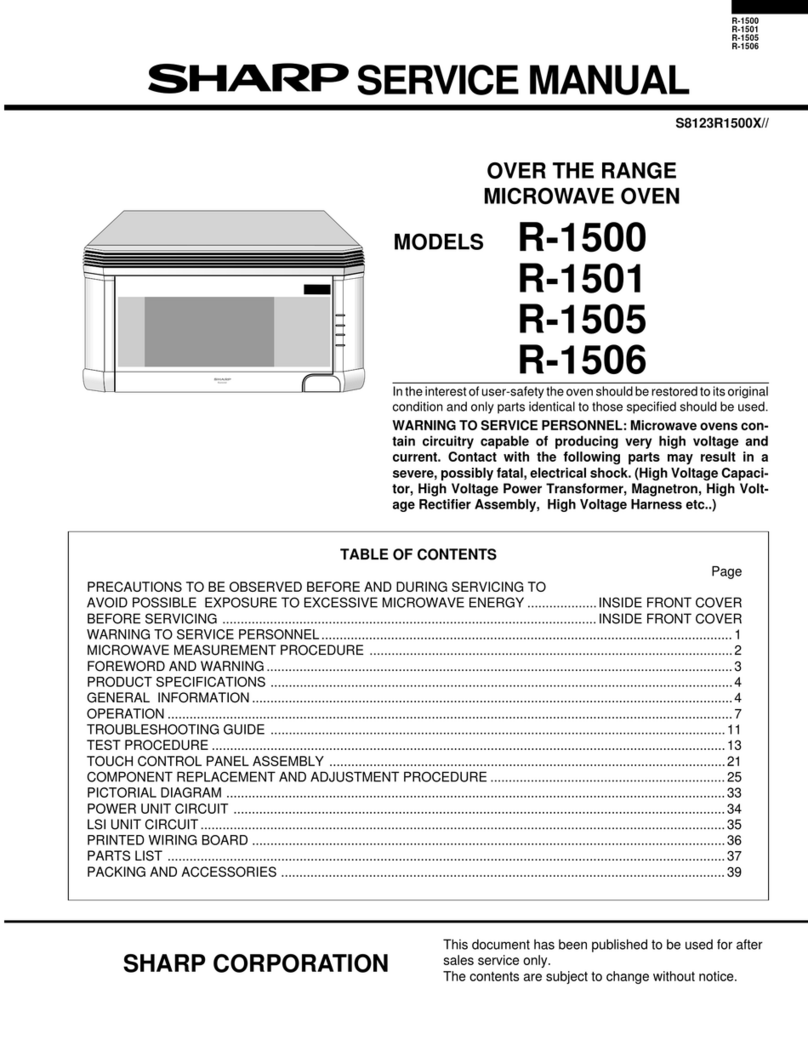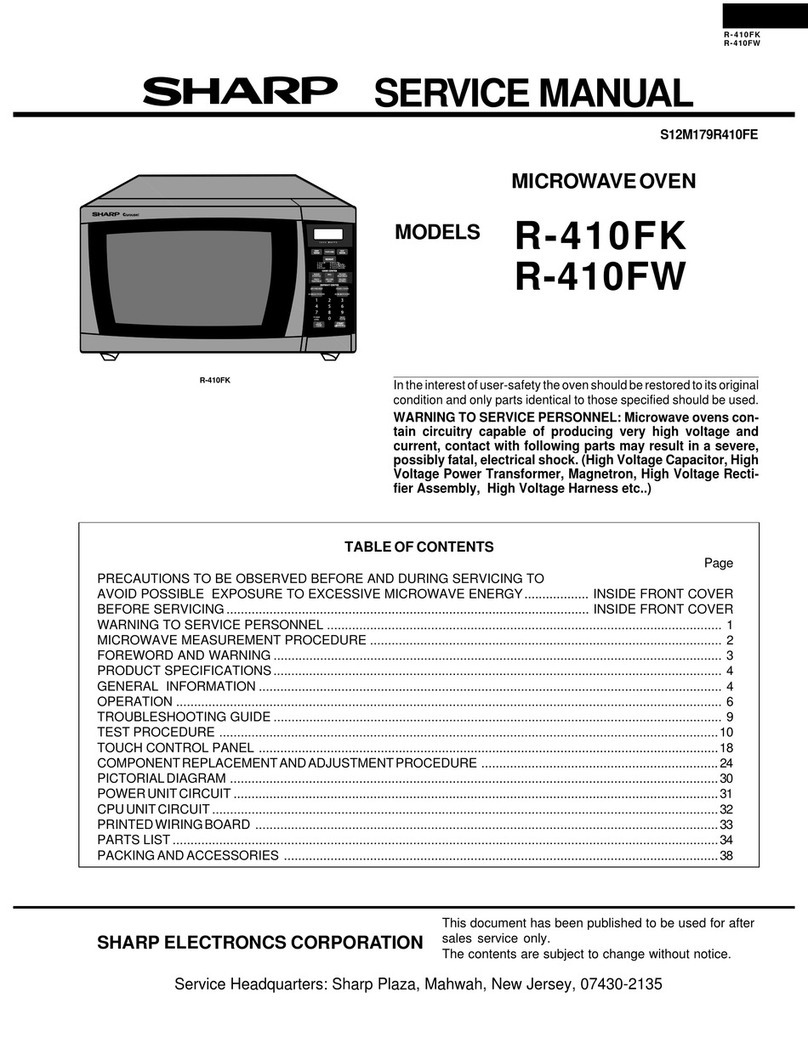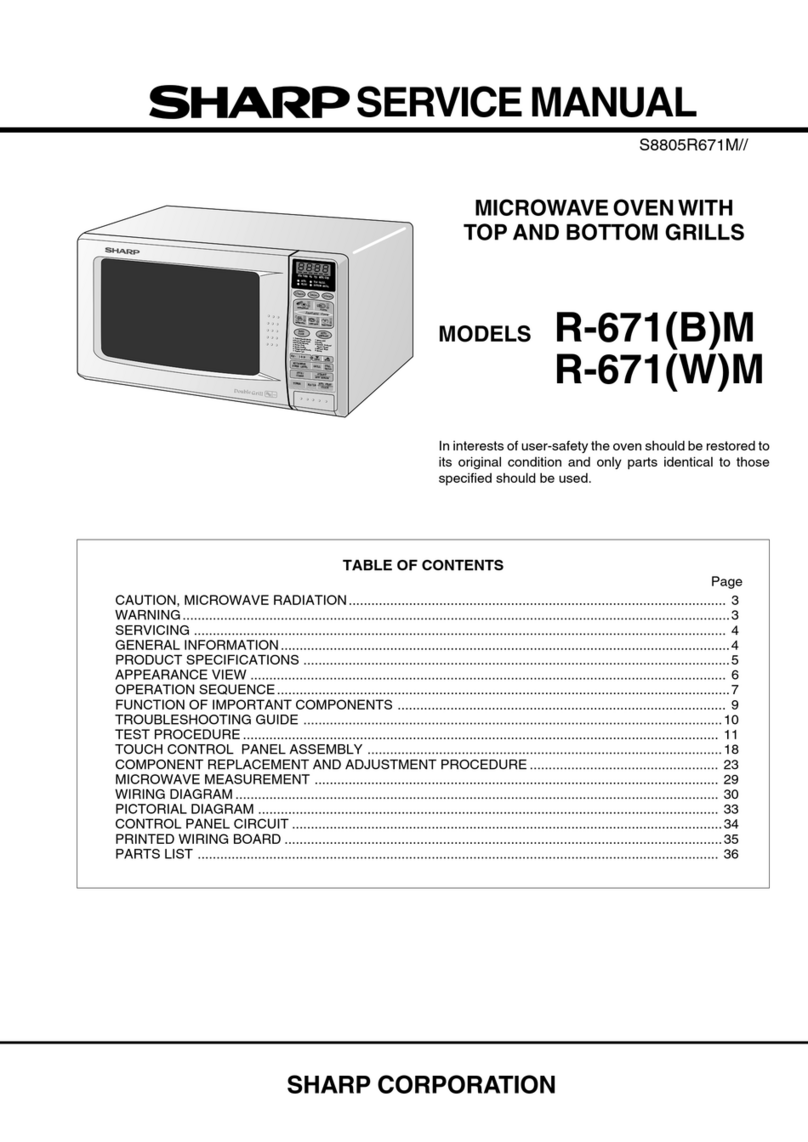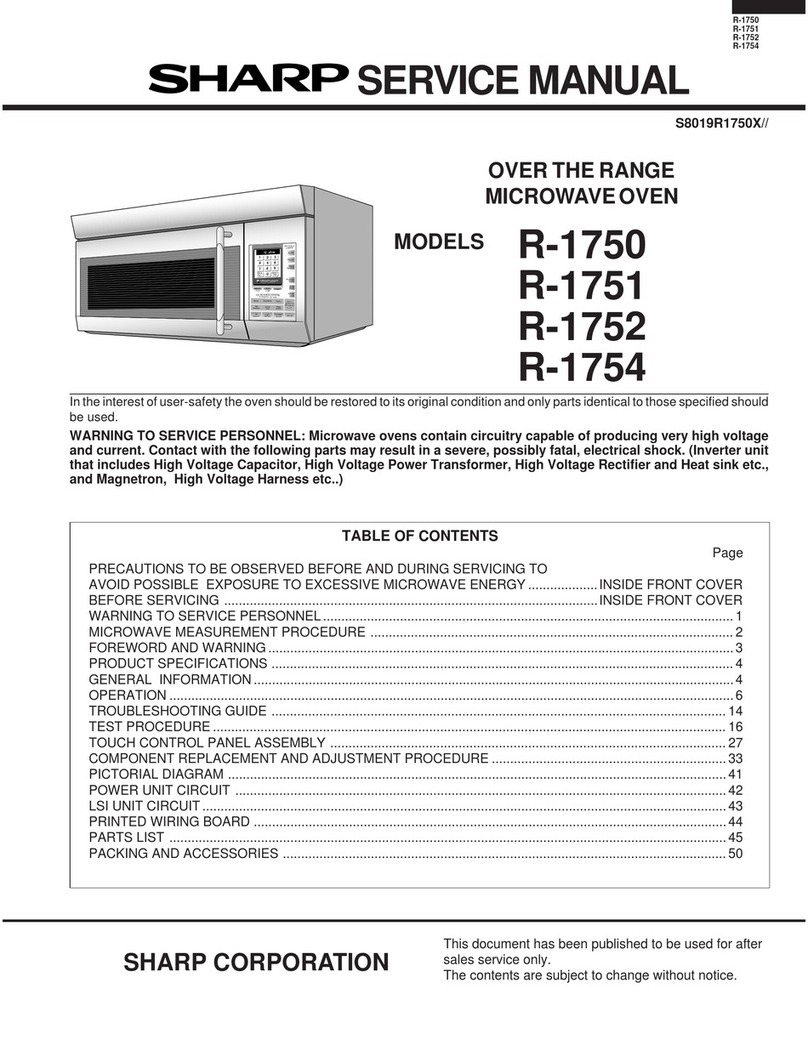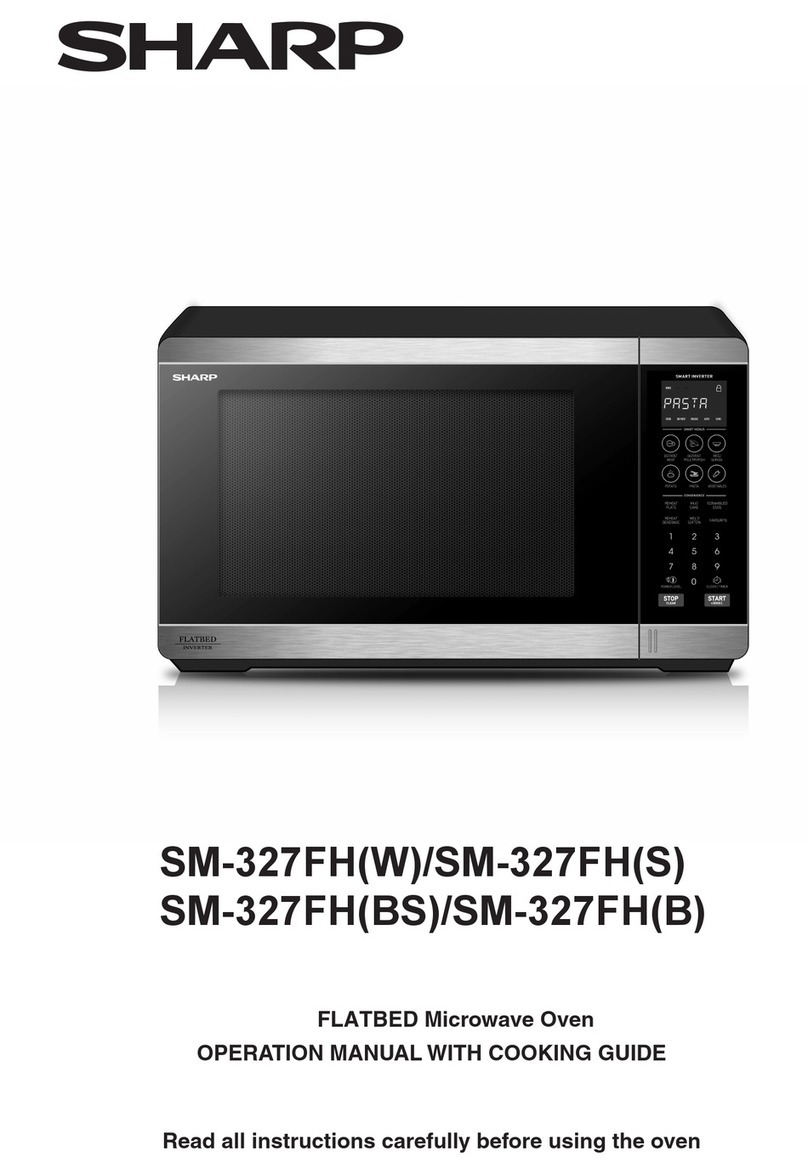R-6280
DESCRIPTION AND FUNCTION OF COMPONENTS
OVEN TEMP. FUSE
The temp. fuse located on the top wall of the oven
cavity is designed to prevent damage to the unit if the
foods in the oven catch fire due to overheating
produced by unproper setting of cooking time or failure
of the timer. Open temp. 145 “C(293 ‘F) not resetable.
MAGNETRON TEMP. FUSE
The temp. fuse located on the waveguide side wall is
designed to prevent damage to the magnetron if an
over heated condition develops in the tube due to
cooling fan failure, obstructed air ducts, dirty or
biocked air intake, etc.
Under normal operation, the temp. fuse remains closed.
However, when abnormally high temperatures are
reached within the magnetron the fuse will open at
145 “C(293 ‘F), causing the oven to shut down.
This is a fuse and it does not reset.
UPPER LATCH SWITCH
The switch is activated by the upper iatch head on the
door. When the door is opened, the switch interrupts
the circuit to all components (except oven lamp). A
cook cycle cannot take until the door is firmiy ciosed
and the start button depressed with the timer ser.
COOK (LOWER LATCH) SWlTCH
This switch functions both as a cook(iower iatch)
switch. Operation are as follows.
1. When the door is closed, the latch head moves
downward the cook switch lever which causes not
to close the cook(lower latch) switch contacts.
2. When the start button is pressed, it operates the
cook switch lever moving latch head downward
farther.
The cook switch lever now depresses the plunger
of the switch closing its COM- NO contacts (ON
condition).
3. When the open button is pressed, it pushes up the
cook switch lever raising the latch heads. As the
cook switch lever is raised, the switch plunger is
released, opening the COM-NO contacts of the
switch (OFF condition). The cook switch lever is
also returned to original position.
MONITOR SWITCH
The monitor switch is activated (the contacts opened)
by the latch head on the door while the door is closed,
The switch is intended to render the oven inoperative
by means of blowning the fuse when the contacts of
the cook switch, fail to open when the door is opened.
Functions:
1. When the door is opened, the monitor switch con-
tacts close (to the ON condition) due to their being
normally opened. At this time the cook(lower
latch) switch are in the OFF condition (contacts
open) due to their being normally open contacts
switches.
2.
3.
As the door goes to a closed position, the monitor
switch contacts are first opened and then the upper
latch switch contacts close. The cook (lower
latch)switch contacts close when the start button
is depressed (In case of opening the door, each of
these switches operate inversely.)
If the door is opened, and the cook(lower latch)
switch contacts fail to open the fuse blows simul-
taneously with closing of the monitor switch con-
tacts.
CAUTION:BEFORE REPLACING A BLOWN FUSE
M6.3A TEST THE COOK(LOWER LATCH)
SWITCH AND MONITOR SWITCH FOR
PROPER OPERATION.
(REFER TO CHAPTER “TEST PROCE-
DURE”).
DOOR OPEN MECHANISM
The door is opened by pushrng the open button on the
control panel, refer to the Figure D-i.
When the open button Is pushed, the open lever
pushes up the switch lever. and then the switch lever
pushes up the latch head.
The latch head are moved upward and released from
the latch hook. Now the door will open.
\
UPPER
LATCH
SWITCH
MONITOR
SWITCH
COOK
(LATCH)
SWITCH
COOK
‘SWITCH
LEVER
J
/J al’x< ‘h-
O/
3 A.
START ‘L
BUTTON \OPEN
BUTTON
Fiaure D-l. Door ODen Mechanism
5
